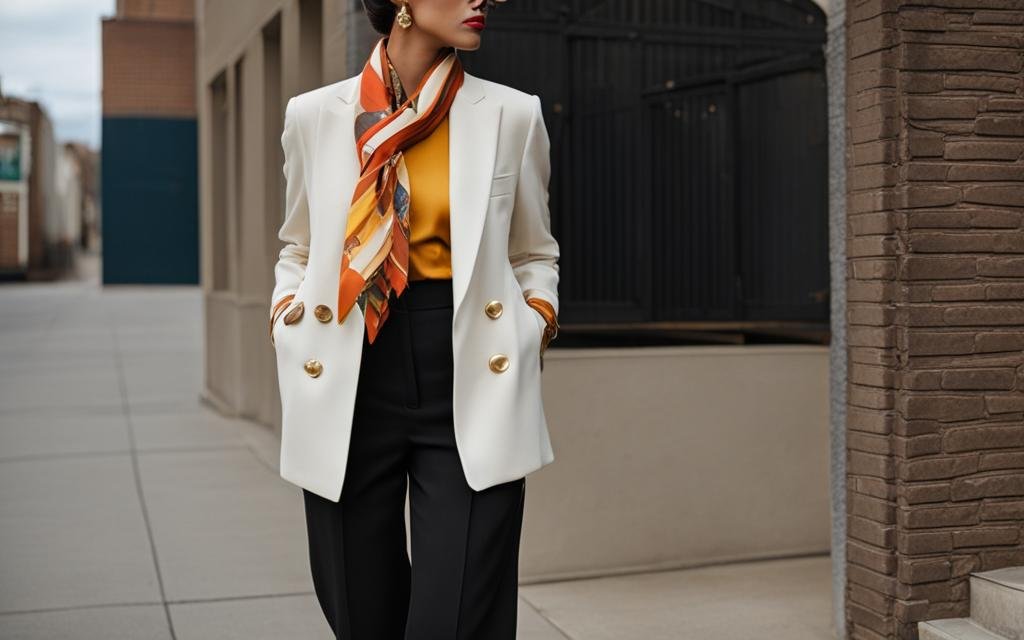Are you ready to discover a world of savings and unique treasures? Secondhand shopping, also known as thrift shopping, has skyrocketed in popularity, becoming a global phenomenon. Whether you’re searching for vintage clothing, used furniture, or pre-loved items, thrift stores and online resale platforms have got you covered.
Over the past decade, the secondhand retail industry has experienced remarkable growth, reaching a staggering $28 billion market. It’s no longer just teenagers hunting for affordable clothes; businesses are also embracing the trend. In fact, the secondhand market is projected to more than double in the United States, reaching a whopping $82 billion by 2026.
What’s driving the thrifting craze? Well, it’s influenced by various cultural trends, including style and nostalgia, sustainability, the power of Gen Z consumers, the impact of social media, and rising costs of goods. Whether you’re an individual or a business, incorporating thrifting into your lifestyle or marketing strategy can bring numerous benefits.
Key Takeaways:
- Secondhand shopping is a global phenomenon, with the secondhand retail industry projected to reach $82 billion in the US by 2026.
- Thrifting is driven by style and nostalgia, sustainability, the influence of Gen Z consumers, social media, and rising costs of goods.
- Businesses can benefit from thrifting by utilizing existing inventory, building relationships with consumers, reinforcing sustainability commitments, and deepening brand connections.
- Thrifting offers a way to save money, find unique items, and contribute to reducing the fashion industry’s environmental impact.
- Embracing thrifting allows individuals to express their personal style, support charitable organizations, and give back to communities.
The Rise of Thrift Shopping: From Stigma to Celebrated Trend
Thrift shopping, or secondhand shopping, has evolved from being stigmatized to being celebrated. It has become a popular trend in the fashion industry, driven by changing consumption patterns and growing awareness of climate change.
One of the main reasons for the rise of thrift shopping is the recognition of the negative impacts of fast fashion on the environment. The fashion industry is known for its high levels of pollution, carbon emissions, and clothing waste. By opting for secondhand shopping, consumers can reduce their carbon footprint and contribute to a more sustainable future.
In addition to environmental awareness, the shifting preferences of consumers have also played a significant role in the popularity of thrift shopping. Gen Z, in particular, has embraced thrift shopping as a way to express their individual style while avoiding the cookie-cutter fashion trends promoted by fast fashion brands. Thrift shopping offers a way to find unique pieces that reflect personal style and stand out from the crowd.
Furthermore, thrift shopping provides an opportunity to support local communities and charitable organizations. Many thrift stores are affiliated with charities and donate a portion of their proceeds to support a cause. By shopping secondhand, individuals can contribute to these organizations and give back to their communities.
The Benefits of Thrift Shopping:
- Cost savings: Thrift shopping allows you to find quality items at a fraction of their original price, helping you save money.
- Unique style: With thrift shopping, you can discover one-of-a-kind pieces that aren’t mass-produced, allowing you to express your individuality.
- Sustainability: By reducing the demand for new clothing production, thrift shopping helps to minimize the environmental impact of the fashion industry.
- Supporting charitable causes: Many thrift stores are affiliated with charitable organizations, meaning your purchases contribute to a good cause.
- Reducing clothing waste: By giving pre-loved items a second life, thrift shopping helps to reduce the amount of clothing that ends up in landfills.
Thrift shopping has come a long way from being seen as a last resort for those on tight budgets. It has now become a celebrated trend that aligns with the values of sustainability and individuality. So, next time you’re looking to refresh your wardrobe or find unique pieces for your home, consider thrift shopping as a smart and stylish choice.
Thrifting Tips: Elevating Your Professional Style Through Second-Hand Shopping
Thrifting is not just for casual wear; it can also be a fantastic way to build a professional wardrobe on a budget. Whether you’re looking for affordable business attire or unique finds that make a statement, thrift stores, consignment shops, and online platforms offer a treasure trove of options. With a little effort and some thrifting tips, you can elevate your professional style while saving money and contributing to sustainability. Here are some tips to help you make the most out of your thrifting experience:
1. Set clear goals:
Before you start your thrifting adventure, determine what specific items you need for your professional wardrobe. Having a clear vision of what you’re looking for will help you stay focused and avoid getting overwhelmed by the abundance of choices.
2. Research thrift stores in your area:
Not all thrift stores are created equal. Take some time to research and visit different thrift stores in your area to find the ones that consistently offer a good selection of professional clothing. Check online reviews and ask for recommendations from friends who are avid thrifters.
3. Visit regularly:
Thrifting requires patience and persistence. Make it a habit to visit your favorite thrift stores regularly, as new items are constantly being added to the racks. The more frequently you visit, the higher the chances of finding that perfect piece for your professional wardrobe.
4. Inspect garments carefully:
When shopping secondhand, it’s important to carefully inspect the garments for any flaws or signs of wear. Check for loose threads, stains, or missing buttons. Don’t be discouraged if you find a small flaw; oftentimes, it can be easily fixed or overlooked if the overall garment is of high quality.
5. Try everything on:
Don’t rely solely on the size tag when thrifting. Sizes can vary greatly between different brands and time periods. Always try on items to ensure they fit well and flatter your body shape. Remember, alterations are also an option if you find an item you love that needs a little tweaking.
6. Think outside the box:
Don’t be afraid to explore different sections of the thrift store. Sometimes, hidden gems can be found in unexpected places. Check out the men’s section for blazers or oversized shirts that can be tailored to fit your style. Be open-minded and willing to experiment with different styles and silhouettes.
7. Take advantage of sales and discounts:
Many thrift stores offer regular sales and discounts, so keep an eye out for special promotions. Some stores may have specific days where certain items are discounted, while others may offer loyalty programs or bulk purchase discounts. Take advantage of these opportunities to save even more on your thrifting finds.
By following these thrifting tips, you can elevate your professional style, discover unique pieces, and build a wardrobe that reflects your individuality. Thrifting is not only a budget-friendly option, but it also allows you to contribute to sustainability by giving pre-loved clothing a second chance. So, why not embrace the thrill of the hunt and unlock the hidden treasures of the thrift store?

The Impact of Thrift Shopping on the Environment and Sustainable Fashion
Thrift shopping has a significant impact on the environment and promotes sustainable fashion practices. The fast fashion industry is notorious for its high carbon emissions and excessive clothing waste. By choosing to thrift shop, you can contribute to reducing the demand for new clothing production and prevent tons of garments from ending up in landfills.
When you purchase secondhand clothing, you are participating in the concept of circular fashion, where clothing is repurposed and given a second life. This helps to reduce the carbon footprint associated with the fashion industry as well as minimize water waste. Thrift shopping aligns with the principles of reuse and recycling, making it a sustainable choice for conscious consumers.
The Benefits of Thrift Shopping for the Environment:
- Reduces the demand for new clothing production
- Prevents clothing waste from ending up in landfills
- Decreases carbon emissions and water waste
- Promotes circular fashion and the reuse of clothing
- Supports sustainable fashion practices

Not only does thrift shopping have a positive environmental impact, but it also provides an opportunity to support ethical and socially responsible practices. Many thrift stores are affiliated with charitable organizations, and by shopping at these establishments, you can contribute to their cause. Additionally, buying from local thrift stores and small businesses helps to strengthen the local economy.
So, the next time you’re in need of new clothing or accessories, consider thrift shopping. By choosing secondhand items, you can make a difference in protecting the environment, promoting sustainable fashion, and supporting worthy causes. Embrace the power of thrift shopping and join the movement towards a more sustainable future.
Conclusion
Secondhand shopping, whether through thrift stores or online resale platforms, offers a multitude of benefits. Not only does it allow you to save money, but it also provides the opportunity to discover unique and vintage pieces that can truly reflect your individual style. Embracing secondhand shopping is not only a personal choice but also a way to contribute to the sustainability of the fashion industry.
By opting for secondhand clothing, you play a part in reducing clothing waste and minimizing the carbon footprint associated with the production of new garments. Thrift shopping promotes the concept of circular fashion, where clothing is reused and given a second life, leading to a more environmentally friendly and socially responsible approach to fashion.
Thrifting is not limited to just casual wear. It can also be an excellent way to curate a professional wardrobe without breaking the bank. With a little research, regular visits to thrift stores, and an open mind, you can discover affordable and unique business attire that will make a statement in the workplace.
So, why wait? Start exploring the world of secondhand shopping today. Not only will you find great deals and express your unique style, but you will also be making a positive impact on the environment, supporting sustainable fashion practices, and contributing to charitable organizations and local businesses. Secondhand shopping truly is the gateway to affordable clothing, sustainable fashion, and a more conscious way of living.
FAQ
What is thrift shopping?
Thrift shopping, also known as secondhand shopping, involves purchasing used items, such as clothing, furniture, and accessories, from thrift stores or online resale platforms.
Why has thrift shopping become so popular?
Thrift shopping has gained popularity due to various factors, including increased awareness of the negative impacts of fast fashion, changing consumer preferences, and the influence of Generation Z.
What are the benefits of thrift shopping?
Thrift shopping allows individuals to save money, find unique and vintage pieces, reduce clothing waste, and support sustainable fashion practices.
Can I find professional attire through thrift shopping?
Yes, thrift stores, consignment shops, and online platforms offer a wide range of affordable and unique business attire, making it possible to build a professional wardrobe on a budget.
How can I make the most out of thrift shopping for professional clothing?
To make the most out of thrift shopping for professional clothing, it is important to set clear goals, research thrift stores in your area, visit regularly, inspect garments carefully, try everything on, think outside the box, and take advantage of sales and discounts.
How does thrift shopping contribute to sustainability?
Thrift shopping reduces the demand for new clothing production, preventing clothing waste from ending up in landfills. It promotes circular fashion, where clothing is repurposed and given a second life, ultimately reducing the carbon footprint of the fashion industry.
Can thrift shopping support charitable organizations?
Yes, thrift shopping provides an opportunity to support charitable organizations as many thrift stores operate as nonprofit entities, with proceeds going towards their respective causes.

